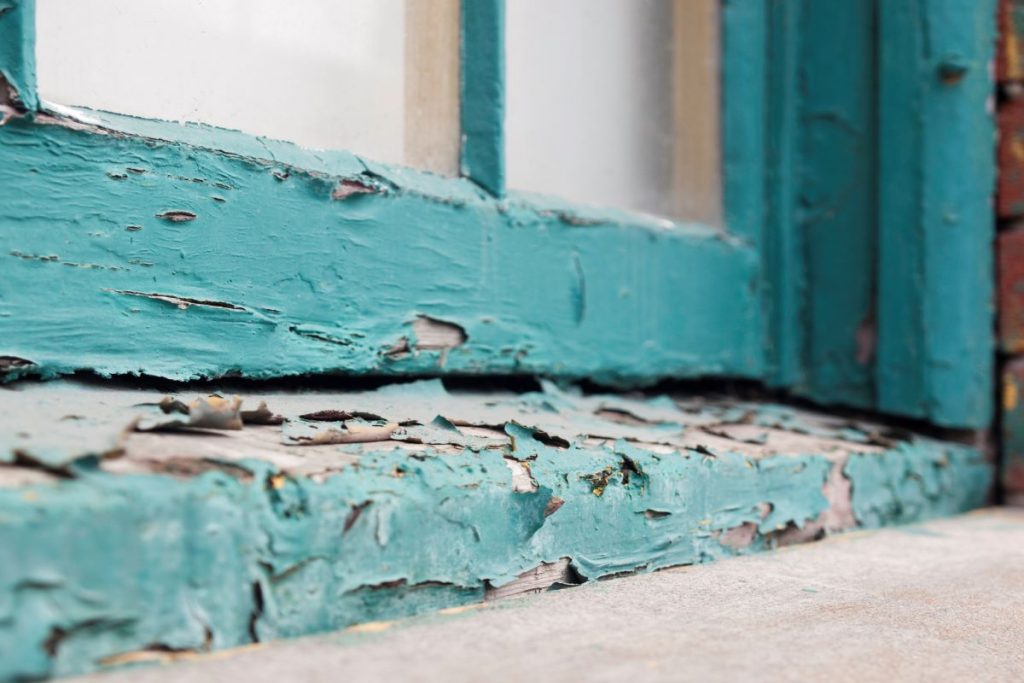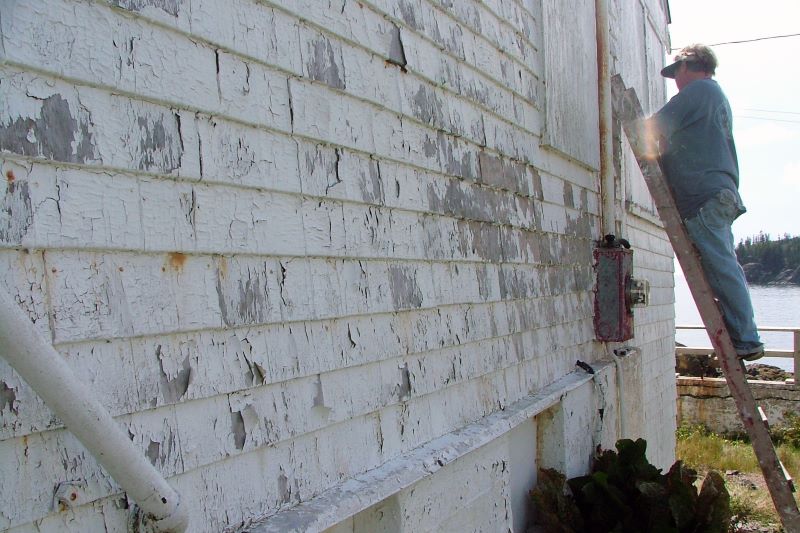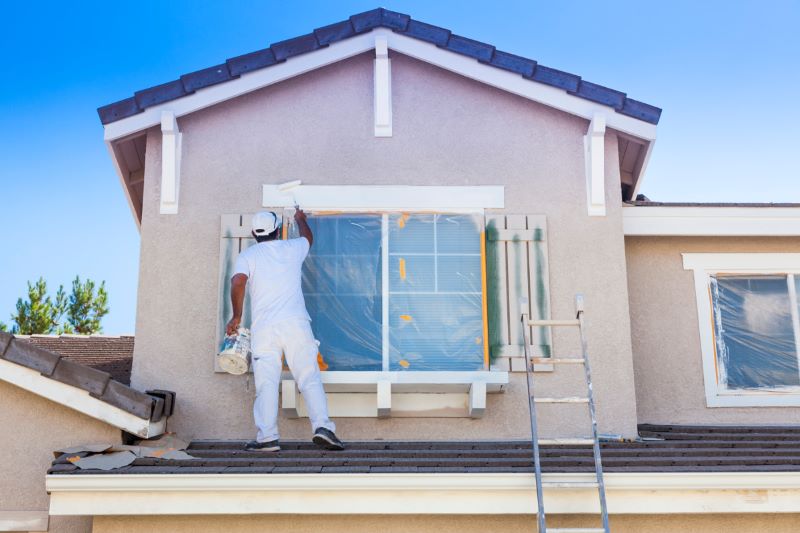Table of Contents
Over the past several years, the United States Environmental Protection Agency (EPA) has stepped up regulations regarding the handling and containment practices that must be taken when working in homes that may be contaminated with lead paint. These new regulations affect any house built before 1978 and any amount of renovation being completed on the home. Below are answers to the three most commonly asked questions regarding lead paint.
Does my home have lead paint?
Although lead-based paint was banned in the U.S. in 1978, it began being phased out starting in the early 1960s. More recently, the EPA has launched national advertising campaigns to educate the public on the dangers of lead paint. The chance that your home may be contaminated with lead paint is based on the year it was built. Houses built between 1920 and 1949 are the most likely to be contaminated with an 80% possibility it contains lead paint. For homes built between 1950 and 1959, those chances drop to 60%. Homes built between 1960 and 1969 have only a 25% chance of containing lead paint while homes built from 1970 to 1978 have a 10% risk of containing lead paint. If you are uncertain if your home contains lead paint and your home was built prior to 1978, it is strongly recommended you have the house tested.
Why is lead paint considered dangerous?
Lead paint attacks the nervous systems of children and adults and is especially hazardous to children under the age of 6, unborn children, and pregnant women. It can greatly impair these children’s mental development if exposed. One reason why there are such stringent regulations for working in a home with lead paint is due to the dust generated by the paint during renovation. When inhaled, these particles go to the brain causing damage to the nervous system and high blood pressure. Prolonged exposure to dust is thought to cause Attention Deficit Hyperactive Disorder (ADHD) and learning disabilities. The EPA reports that the smallest amount, one gram of dust, can contaminate a large area posing a risk to neighbors and workers in the area.

Why was lead ever added to paint if it poses a health risk?
By adding lead to paint manufacturers hoped to add durability to the paint while also enhancing the paint’s color. Throughout the 1920s, Dutch Boy Paint was the best-selling paint brand in the US. Their popularity was fueled by an advertising campaign that touted, “The Most Lead for Your Money!” Despite numerous medical and scientific reports dating back as far as the late 19th century that warned of the health hazards of lead, it was not until the early 1970s that the US government finally acknowledged the danger and outlawed it in 1978.
If you are considering remodeling an older home that may potentially have lead paint, you can visit http://epa.gov/lead for information on test kits certified contractors must use, along with other helpful information regarding lead paint. In addition, when renovating a home built prior to 1978, federal law requires you to hire a remodeling contractor who is an EPA Lead paint-certified renovator.
Check out these 15 House Exterior Paint Color Ideas You Might Not Have Considered for your next reading.

Do Home Inspectors Check For Lead Paint
Yes, home inspectors typically check for lead paint during a home inspection, especially in older homes built before 1978. The use of lead-based paint in residential properties was banned in the United States in 1978 due to the health hazards associated with lead exposure, particularly to children and pregnant women.
Here’s how a home inspector might address lead paint during an inspection:
Visual Inspection:
Home inspectors will visually inspect the interior and exterior surfaces of the home for any peeling, chipping, or deteriorating paint. Lead-based paint is more likely to be a problem when it is in poor condition.
Testing:
In some cases, inspectors may use lead paint test kits to check for the presence of lead in paint. These kits typically involve taking a small sample of paint and using a chemical solution to determine if lead is present. This can provide a more accurate assessment.
Disclosure:
If lead-based paint is found, the home inspector will typically note its presence in the inspection report. It’s important to disclose this information to potential buyers or occupants so that they can take appropriate precautions.
Recommendations:
Inspectors may also offer recommendations for addressing the lead paint issue, which may include repainting, encapsulation, or removal by a certified lead abatement professional.
It’s important to note that while home inspectors can identify the presence of lead-based paint, they are not typically licensed or certified to perform lead paint abatement or remediation work. If lead-based paint is found, it’s advisable to consult with a qualified lead abatement professional to assess and address the issue properly, especially if there are young children or pregnant individuals in the home.
Regulations and requirements related to lead-based paint inspections and remediation can vary by location, so it’s essential to be aware of local laws and regulations regarding lead paint in residential properties.
How to Test For Lead Paint
Testing for lead paint can be done using various methods, including DIY test kits and professional services. Here’s a step-by-step guide on how to test for lead paint:
Materials You’ll Need:
Lead Paint Testing Kit: You can purchase lead paint test kits from hardware stores or online retailers. These kits typically include all the necessary materials for testing.
Safety Equipment: Wear appropriate safety gear, including disposable gloves, a mask, and eye protection, to minimize exposure to lead dust or chips.
Utility Knife or Paint Scraper: You may need a utility knife or paint scraper to collect a sample.
Plastic Bags: Use plastic bags to collect and dispose of samples and any testing materials.
Steps for Testing for Lead Paint:
Preparation: Ensure the room is well-ventilated. Cover the floor, furniture, and surrounding areas with plastic sheets to catch any paint chips or dust that may fall during testing. Put on your safety gear.
Select Test Areas: Choose the areas where you suspect lead paint may be present. Common areas to test include window sills, door frames, baseboards, and any painted surfaces that are deteriorating or chipping.
Collect Paint Samples: Follow the instructions provided with your lead paint test kit for specific guidance. Generally, the steps include:
- Scrape the paint gently using a utility knife or paint scraper. Be cautious not to create excessive dust or debris.
- Collect the paint sample onto a test strip or swab provided in the kit. Ensure you collect enough for accurate testing.
- Place the sample in a labeled plastic bag or container provided with the kit.
Perform the Test: Depending on the type of test kit you have, you may need to break or shake the test swab, apply a solution, or follow other kit-specific instructions. Follow the provided instructions carefully.
Wait for Results: Test kits will have specific waiting times for results. Follow the recommended waiting period without disturbing the sample.
Interpret Results: After the designated time, check the test results according to the instructions. The test will indicate whether lead is present or not. Results may be displayed as color changes or through other indicators.
Dispose of Materials Safely: Dispose of the used testing materials, paint samples, and any contaminated items (e.g., gloves) as hazardous waste following your local regulations.
Record and Report Results: If the test indicates the presence of lead, document the results and consider taking further action, such as contacting a professional lead abatement service if necessary.
Keep in mind that DIY test kits have varying levels of accuracy, and false negatives or positives can occur. If you have concerns about lead paint in your home, especially in older homes built before 1978, it’s wise to consult with a certified lead inspector or abatement professional for a more comprehensive and reliable assessment. They have access to more advanced testing methods and can provide expert guidance on mitigation if lead is found.







